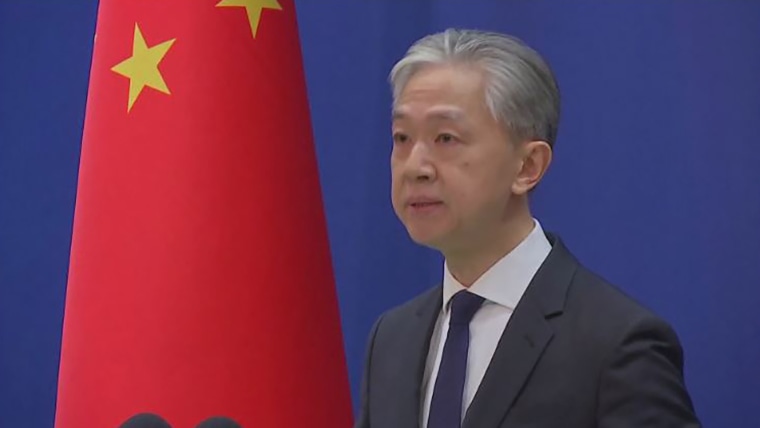Courtney Kube and Carol E. Lee
The Chinese spy balloon that flew across the U.S. was able to gather intelligence from several sensitive American military sites, despite the Biden administration’s efforts to block it from doing so, according to two current senior U.S. officials and one former senior administration official.
China was able to control the balloon so it could make multiple passes over some of the sites (at times flying figure-eight formations) and transmit the information it collected back to Beijing in real time, the three officials said. The intelligence China collected was mostly from electronic signals, which can be picked up from weapons systems or include communications from base personnel, rather than images, the officials said.
The three officials said China could have gathered much more intelligence from sensitive sites if not for the administration’s efforts to move around potential targets and obscure the balloon’s ability to pick up their electronic signals by stopping them from broadcasting or emitting signals.
The Defense Department directed NBC News to comments senior officials made in February that the balloon had “limited additive value” for intelligence collection by the Chinese government “over and above what [China] is likely able to collect through things like satellites in low earth orbit.”
On Monday, a Defense Department spokesperson reiterated that any intelligence collected had "limited additive value" for China and said she could not confirm that the balloon had transmitted any information back to China in "real time."
National Security Council spokesperson Kirby John declined to answer questions Monday afternoon about what kind of electronic signals or communications the balloon could have accessed.
“Knowing it was going to enter U.S. airspace we took action to limit the ability of this balloon to garner anything of additive or especially useful content,” said Kirby. “So again, I won’t get ahead of what we’re learning off this thing.”
Montana Sen. Steve Daines, a Republican, said, “The administration’s explanation that the balloon had ‘limited additive value’ is little comfort to Montanans and the American people and weak spin on an issue the administration mishandled from start to finish.”
Sen. Roger Wicker, R-Miss., ranking member of the Senate Armed Services Committee said, "We have consistently learned more from press reports about the Chinese surveillance balloon than we have from administration officials. ... I intend to hold this administration accountable."
China has said repeatedly that the balloon was an unmanned civilian airship that accidentally strayed off course, and that the U.S. overreacted by shooting it down. Officials have not said which company, department or organization the balloon belonged to, despite several requests for comment by NBC News.
After the balloon was shot down in February, Biden administration officials said it was capable of collecting signals intelligence.
The balloon had a self-destruct mechanism that could have been activated remotely by China, but the officials said it’s not clear if that didn’t happen because the mechanism malfunctioned or because China decided not to trigger it.
The balloon entered U.S. airspace over Alaska on Jan. 28, according to the Biden administration, which said it was tracking it as it moved. Within the next four days, the balloon was flying over Montana — specifically Malmstrom Air Force Base, where the U.S. stores some of its nuclear assets.
On Feb. 2, NBC News was first to report that the Chinese spy balloon was flying over the U.S. and that President Joe Biden had considered shooting it down, prompting the administration to publicly confirm that and disclose it had been monitoring the balloon for days. Once the balloon’s existence became public, China increased its speed, officials said, in attempt to get it out of U.S. airspace as quickly as possible.
The U.S. shot down the balloon on Feb. 4 off the coast of South Carolina, and officials are still analyzing the debris that was retrieved.
At the time, the U.S. government said it waited to shoot the balloon down until it was over the ocean to avoid any damage or casualties on the ground. The balloon, which was nearly as large as three school buses, would have had a large debris field that U.S. officials could not control as it fell to the earth.
“U.S. military commanders had determined downing the balloon while over land posed an undue risk to people across a wide area due to the size and altitude of the balloon and its surveillance payload,” Defense Secretary Lloyd Austin said in a statement after the balloon was downed.

No comments:
Post a Comment